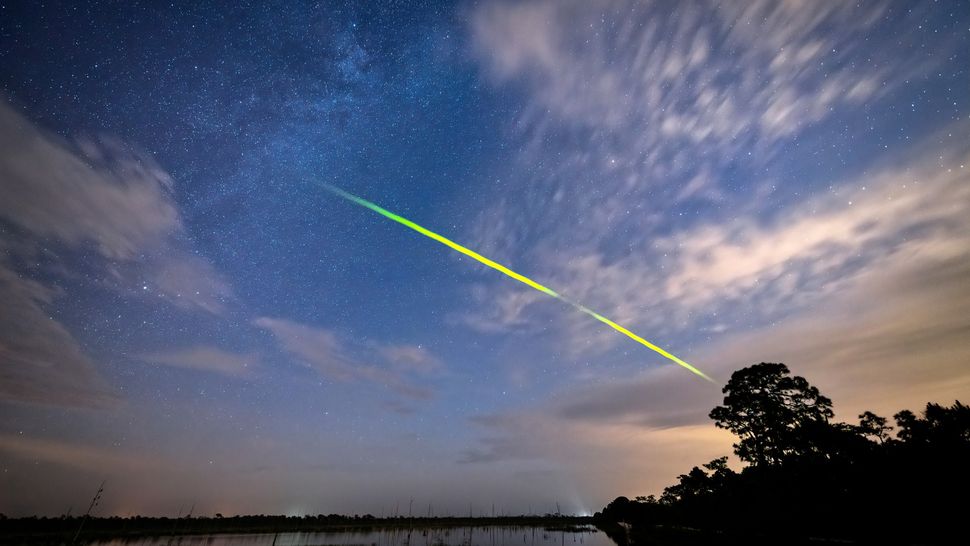Eta Aquarid meteor shower peak could spawn over 100 'shooting stars' per hour this weekend
By Joe Rao published 2 hours ago
Astronomers predict that this year's Eta Aquarids are "expected to show a noticeable outburst" thanks to meteoroids ejected from Halley's comet about 2,500 years ago.

a streak of green light zooms across the night sky above a lake
A rare green fireball meteor from the Eta Aquarid Meteor Shower streaks through the sky above Babcock Wildlife Management Area near Punta Gorda, Florida on May 7, 2019. (Image credit: Diana Robinson Photography/Getty Images)
It has been 38 years since Halley's Comet last passed through the inner solar system. This famous comet takes roughly 75 years to circle the sun. But if you're 42 years old or younger, you probably have little or no memory of the 1986 appearance of this famous cosmic vagabond (your next chance will come in the summer of 2061).
Or maybe, if you were around back then, you didn't see Halley at all because of light pollution or the comet's low altitude above the horizon. If you missed out on the 1986 event, or don't want to wait until 2061, you might want to step outside before sunrise during these next few mornings and try to catch a view of some "cosmic litter" that has been left behind in space by Halley's Comet.
The orbit of Halley's Comet closely approaches the Earth's orbit at two places. One point is in the middle to latter part of October, producing a meteor display known as the Orionids. The other point comes in the early part of May, producing the Eta Aquarid meteors.
When and where to watch
This year, the Eta Aquarid meteor shower is predicted to be at its best on Sunday morning, May 5, when the moon is a very thin (8% illuminated) waning crescent and safely out of harm's way to cause any disruption to visibility.
More:
https://www.space.com/eta-aquarid-meteor-shower-2024-peak-halleys-comet
